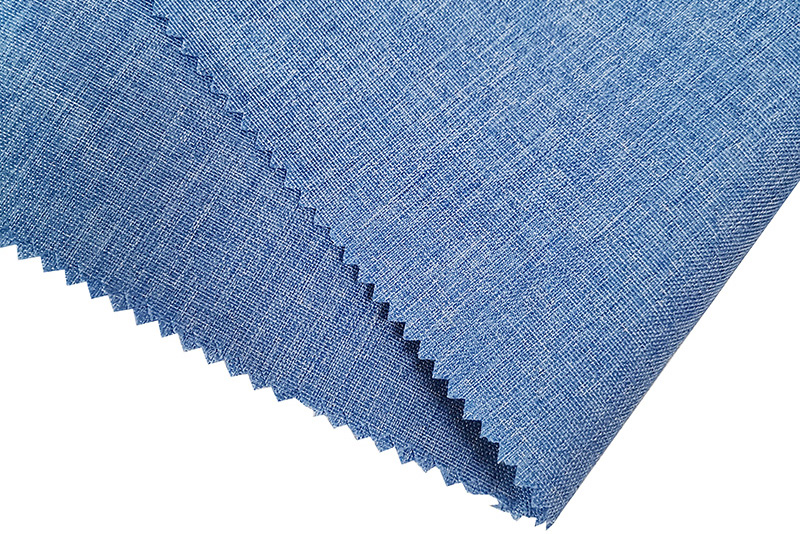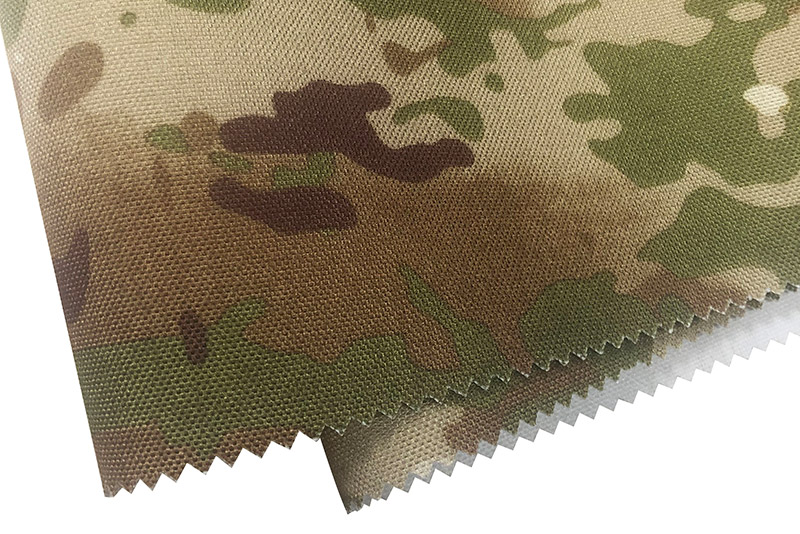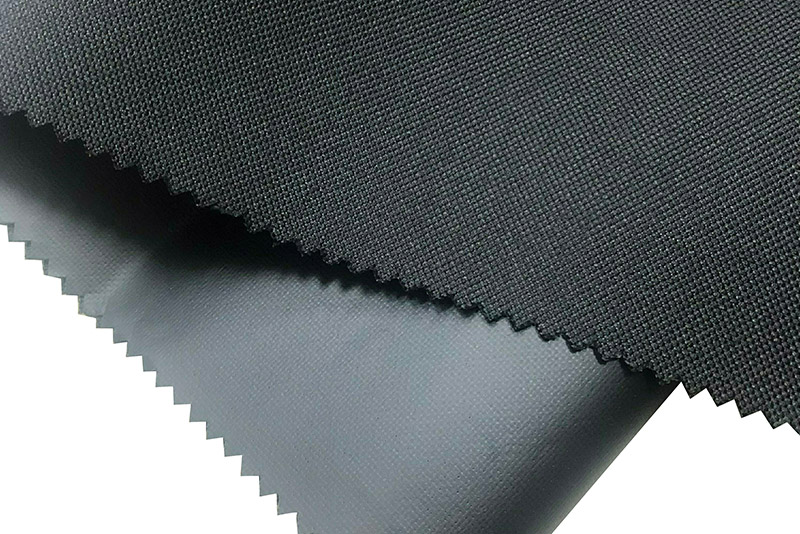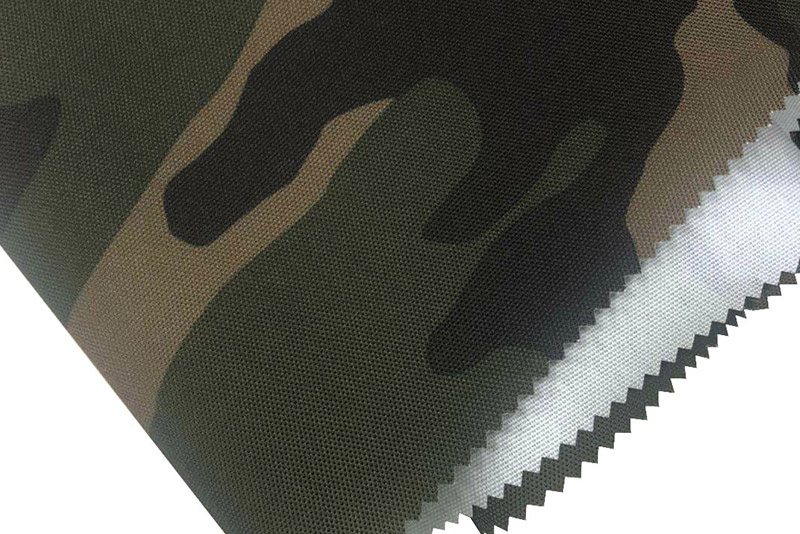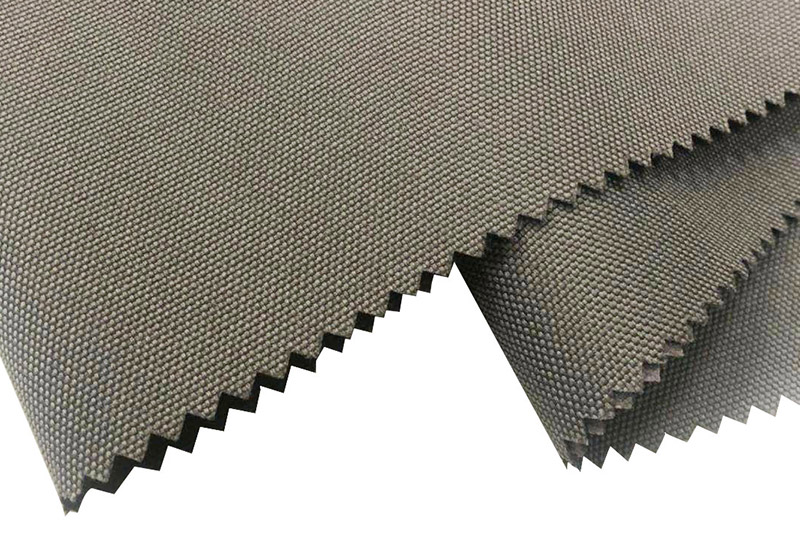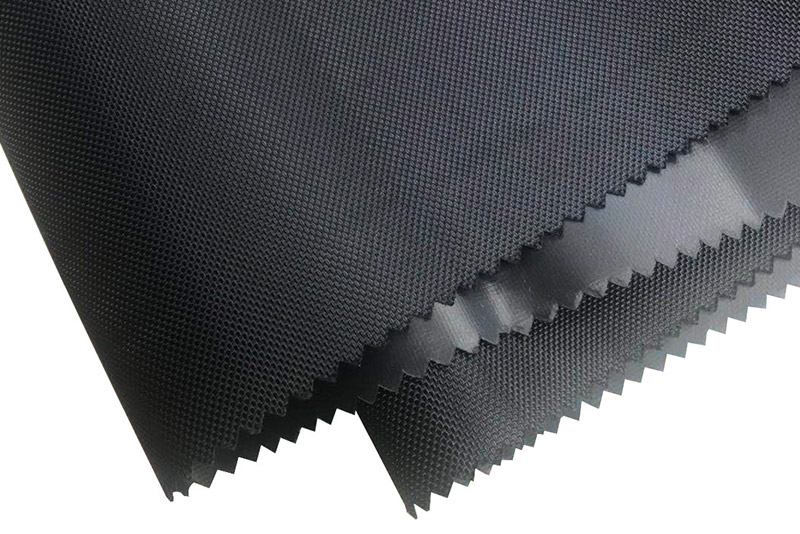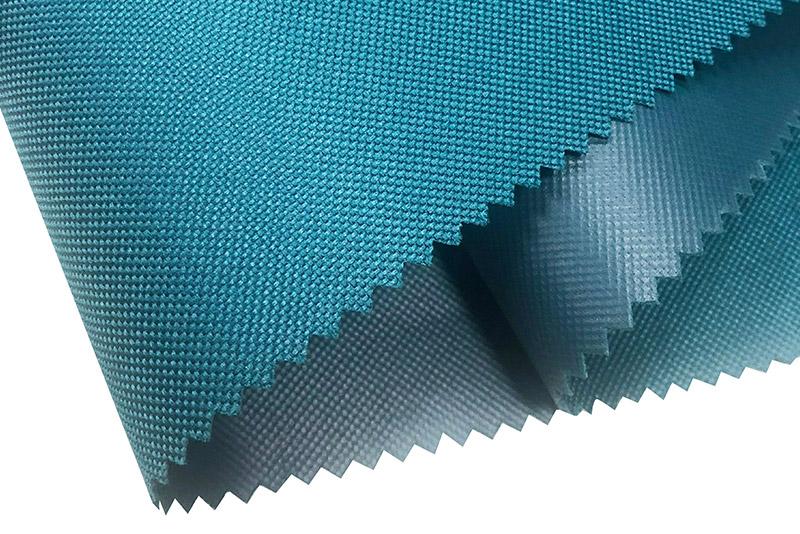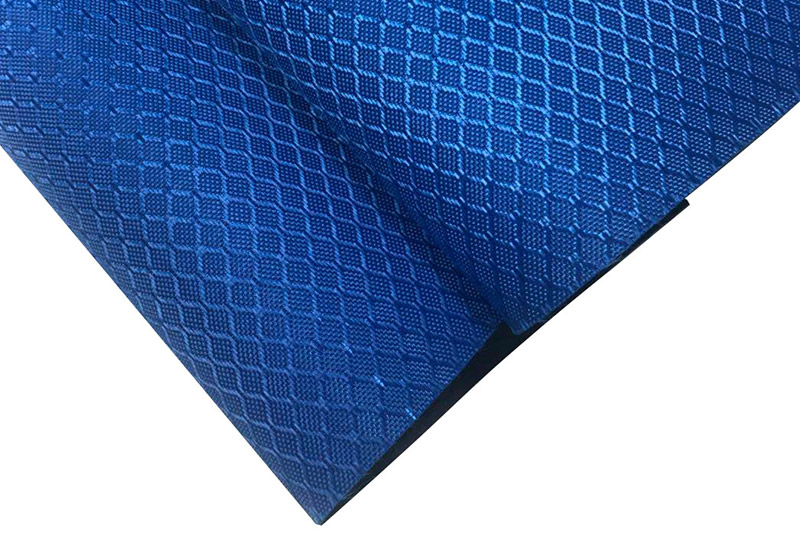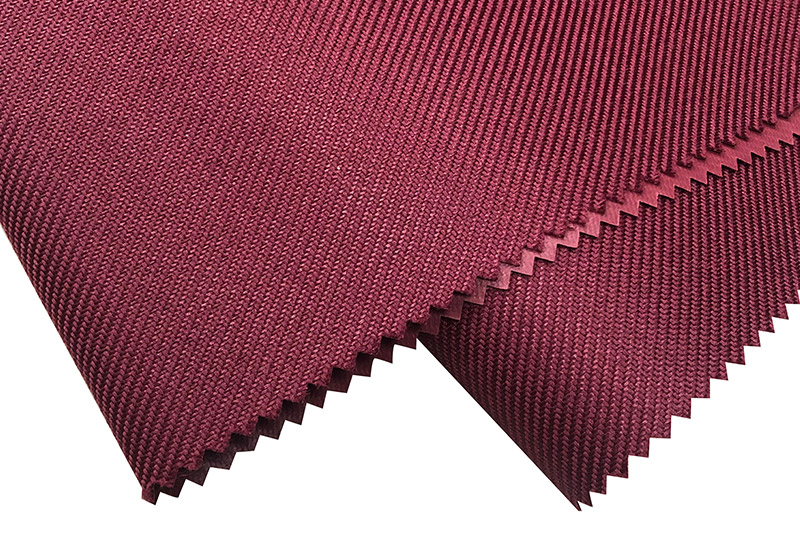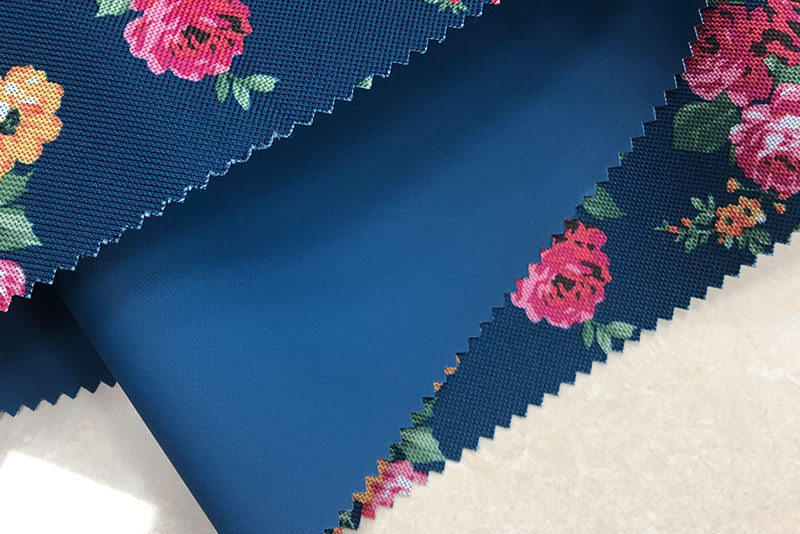Fabrics are the foundation of countless products, from the clothes we wear to the furnishings that adorn our homes. Among the vast array of textile options, Jacquard and Oxford fabrics stand out for their distinct characteristics and widespread applications. While both are popular choices, they differ significantly in their construction, appearance, and suitability for various projects. This article will delve into the intricacies of Jacquard and Oxford fabrics, comparing and contrasting their key features, exploring their diverse uses, and providing a guide to help you choose the right one for your specific needs.
What is Jacquard Fabric?
Jacquard fabric is a type of intricately woven textile renowned for its complex, woven-in patterns. Unlike printed or embroidered designs, the motifs in Jacquard fabric are an integral part of the weave itself, giving them a unique depth and dimension.
The history of Jacquard fabric is intrinsically linked to the invention of the Jacquard loom by Joseph-Marie Jacquard in 1801. Before this revolutionary machine, creating elaborate patterns in fabric was a labor-intensive manual process, often requiring multiple weavers. Jacquard's invention, which utilized punch cards to control individual warp threads, automated and simplified this complex process, dramatically impacting textile production and making intricate designs more accessible.
Characteristics of Jacquard Fabric:
Intricate Patterns and Designs: The most defining characteristic of Jacquard fabric is its ability to produce highly detailed and elaborate patterns directly within the weave.
Variety of Materials Used: Jacquard fabrics are not defined by the fiber content but by the weaving method. They can be made from a wide array of materials, including natural fibers like cotton, silk, linen, and wool, as well as synthetic fibers such as polyester and rayon, or blends of these. This versatility in material allows for a broad range of textures, drapes, and performance characteristics.
Durability and Texture: Due to their complex and often tightly woven structure, Jacquard fabrics tend to be quite durable and resistant to wear and tear. The intricate patterns also create a distinct texture on the fabric's surface, which can vary from subtly raised to more pronounced, adding to its luxurious feel and visual appeal.

What is Oxford Fabric?
Oxford fabric is a popular woven textile known for its distinctive basketweave structure, which gives it a slightly textured, yet soft and comfortable feel.
The history and origin of Oxford fabric trace back to 19th-century Scotland. A Scottish fabric mill experimented with different weaves and named four of their new shirtings after prestigious universities: Oxford, Harvard, Cambridge, and Yale. Of these, only the Oxford weave gained widespread popularity, particularly for shirts, due to its appealing combination of durability, breathability, and comfort. It quickly became a staple, especially among university students and, later, in American Ivy League fashion.
Characteristics of Oxford Fabric:
Basketweave Structure: The defining feature of Oxford fabric is its basketweave. This involves two yarns woven together in a basket-like pattern in both the warp and weft directions, creating a slightly heavier and more textured fabric than a plain weave.
Softness and Breathability: Despite its sturdy construction, Oxford fabric is known for its softness against the skin. The basketweave also allows for good air circulation, making it a breathable fabric that is comfortable to wear in various climates.
Types of Oxford Fabric: While the basic basketweave remains consistent, there are variations of Oxford fabric, each with slightly different characteristics:
Pinpoint Oxford: This type uses finer yarns and a tighter basketweave than standard Oxford, resulting in a smoother, softer texture with a subtle "pin" or "dot" effect. It is generally considered more formal than plain Oxford.
Royal Oxford: Considered the most luxurious of the Oxford fabrics, Royal Oxford features an even finer yarn and a more pronounced, often intricate, weave. It has a lustrous appearance and a very soft hand, making it suitable for high-end dress shirts.
Key Differences Between Jacquard and Oxford Fabrics
While both Jacquard and Oxford fabrics are popular textiles, their fundamental differences lie in their construction, resulting in distinct appearances, textures, and ideal uses.
Weave:
Jacquard: The hallmark of Jacquard fabric is its complex weave, facilitated by the Jacquard loom. This advanced weaving technique allows for individual control over each warp thread, enabling the creation of intricate, multi-layered patterns directly woven into the fabric. The patterns are not merely printed on the surface but are an integral part of the textile's structure, giving them a rich, often three-dimensional quality.
Oxford: In contrast, Oxford fabric utilizes a simple basketweave. This involves two or more warp threads woven over and under an equal number of weft threads, resembling a woven basket. This relatively straightforward weave contributes to Oxford's characteristic texture and durability.
Texture:
Jacquard: Due to its complex patterns and varied yarn combinations, Jacquard fabric is generally more textured. The raised and recessed areas of the woven designs create a tactile surface that can range from subtly embossed to noticeably sculptural, depending on the pattern's intricacy and the yarns used.
Oxford: Oxford fabric has a smoother texture compared to Jacquard, although it's not entirely flat. The basketweave gives it a slight, pleasant texture and a soft hand, making it comfortable against the skin. Pinpoint and Royal Oxford variations will feel even smoother and softer than standard Oxford.
Appearance:
Jacquard: Jacquard fabrics are known for their elaborate and decorative appearance. Their woven patterns can range from classic damasks and brocades to contemporary geometric designs and abstract art. This inherent decorative quality makes Jacquard fabrics often appear luxurious and sophisticated.
Oxford: Oxford fabric presents a plain and simple appearance. Its appeal lies in its classic, understated look, often characterized by a subtle two-tone effect created by the different colored warp and weft yarns, or a uniform solid color with the characteristic basketweave visible. It exudes a casual yet refined aesthetic.
Durability:
Jacquard: Generally, Jacquard fabrics tend to be more durable due to tighter weaves and the inherent strength provided by the complex interweaving of threads. The intricate patterns often contribute to the fabric's structural integrity, making it resistant to snagging and tearing, especially when made from robust fibers.
Oxford: Oxford fabric is less durable than many Jacquard weaves but still suitable for many uses. While sturdy, its basketweave can be more prone to snagging or showing wear over time compared to the dense, interlocking patterns of Jacquard, particularly in high-stress applications. However, for its primary uses like shirts and bedding, its durability is more than adequate.
Uses:
Jacquard: Given its luxurious appearance and durability, Jacquard fabric is frequently employed in high-end clothing such as formal wear, jackets, and vests. It is also a popular choice for home decor, including upholstery for furniture, elegant drapes, decorative pillows, and bedding, where its elaborate patterns can make a significant visual impact.
Oxford: Oxford fabric is a staple for shirts, both dress and casual button-downs, owing to its comfort, breathability, and classic look. It's also commonly used for bedding, particularly sheets and pillowcases, providing a soft and comfortable sleeping surface. Its versatility extends to other items like light jackets and linings.
Uses of Jacquard Fabric
Jacquard fabric's versatility, luxurious appearance, and durability make it a favored choice across various applications:
Clothing:
Formal Wear: Jacquard is a popular choice for evening gowns, cocktail dresses, and special occasion attire, where its elaborate patterns and rich texture can create a striking impression.
Jackets and Vests: The fabric's structure holds shape well, making it ideal for structured jackets, blazers, and vests, adding a touch of sophistication.
Skirts and Trousers: Depending on the weight and drape, Jacquard can be used for tailored skirts and trousers, offering a unique textural element.
Accessories: Small accessories like ties, bow ties, and scarves benefit from Jacquard's ability to showcase intricate designs in a refined manner.
Home Decor:
Upholstery: Its durability and decorative qualities make Jacquard an excellent choice for upholstering furniture such as sofas, armchairs, and dining chairs, transforming them into statement pieces.
Curtains and Drapes: Jacquard drapes add elegance and opulence to windows, with the woven patterns catching the light beautifully and providing good light blocking properties.
Bedding: Luxurious Jacquard duvet covers, bedspreads, and shams elevate the aesthetic of any bedroom, offering both comfort and sophisticated design.
Decorative Pillows: Throw pillows made from Jacquard fabric can introduce texture, pattern, and color accents to sofas and beds.
Other Accessories:
Handbags: Jacquard fabrics are often used in the creation of stylish and durable handbags, clutches, and wallets, showcasing their intricate designs.
Footwear: Some high-end shoes and slippers incorporate Jacquard fabric for decorative panels or entire uppers, adding a unique touch.
Uses of Oxford Fabric
Oxford fabric's comfort, breathability, and classic aesthetic make it a go-to for a range of everyday and semi-formal items:
Shirts:
Dress Shirts: Pinpoint and Royal Oxford are commonly used for business and formal dress shirts, offering a crisp yet comfortable feel with a subtle texture.
Casual Button-Down Shirts: Standard Oxford fabric is iconic for its use in casual button-down shirts, often associated with a relaxed, preppy, or smart-casual style. It's comfortable for everyday wear and durable enough for frequent washing.
Polo Shirts: While often made from pique knit, some polo shirts may feature Oxford fabric collars or plackets for added structure and a distinct look.
Bedding:
Sheets and Pillowcases: Oxford fabric is a popular choice for bed linens due to its softness, breathability, and durability through repeated washing. It offers a comfortable and pleasant sleeping experience.
Duvet Covers: Some duvet covers are made from Oxford fabric, especially those aiming for a relaxed, lived-in feel.
Other:
Light Jackets: Its moderate weight and sturdy nature make Oxford fabric suitable for light jackets, such as windbreakers or casual blazers, offering both comfort and a structured look.
Linings: Oxford can be used as a durable and breathable lining material for bags, coats, and other garments.
Tote Bags: The fabric's strength and relatively low cost make it a practical option for reusable tote bags.
Pros and Cons
Understanding the advantages and disadvantages of each fabric is crucial for making an informed decision.
Jacquard Fabric:
Pros:
Durability: Due to its intricate and often dense weave, Jacquard fabric is generally very durable and resistant to wear and tear, making it a long-lasting choice for many applications.
Intricate Designs: Its most significant advantage is the ability to produce highly complex, woven-in patterns that are rich in detail and often have a three-dimensional effect, offering a luxurious aesthetic.
Luxurious Appearance: The elaborate patterns and often rich textures contribute to a sophisticated and high-end look, making it ideal for formal wear and upscale home decor.
Cons:
Higher Price: The complex weaving process and the time required to produce Jacquard fabric often result in a higher price point compared to simpler weaves.
Can be More Difficult to Maintain: Depending on the fiber content and the intricacy of the weave, Jacquard fabrics might require more delicate care, such as hand washing or dry cleaning, and specific ironing instructions to preserve their integrity and appearance.
Oxford Fabric:
Pros:
Affordable: Compared to Jacquard, Oxford fabric is generally more affordable to produce, making it a budget-friendly option for various uses, especially for everyday items.
Breathable: The basketweave structure allows for good air circulation, making Oxford fabric comfortable and breathable, particularly suitable for shirts and bedding.
Comfortable: Its soft hand and breathable nature contribute to a comfortable wearing experience.
Easy to Maintain: Most Oxford fabrics are machine washable and relatively easy to care for, making them practical for daily use.
Cons:
Less Durable: While sturdy for its intended uses, Oxford fabric is generally less durable than the more tightly woven and complex Jacquard fabrics, and may show signs of wear faster in high-stress applications.
Simpler Appearance: Its aesthetic is characterized by a plain and understated look. While classic and versatile, it lacks the ornate and decorative visual impact of Jacquard.
How to Choose Between Jacquard and Oxford Fabric
Selecting the right fabric for your project involves considering several factors to ensure it meets your functional and aesthetic requirements.
Consider the intended use of the fabric:
For high-end fashion, formal wear, or ornate home decor (upholstery, drapes that make a statement): Jacquard fabric is the superior choice due to its elaborate designs and luxurious appeal.
For everyday shirts, casual wear, comfortable bedding, or linings: Oxford fabric's breathability, comfort, and classic look make it ideal.
Think about the desired appearance and texture:
If you desire intricate, woven-in patterns, a rich texture, and a luxurious, decorative look: Opt for Jacquard.
If you prefer a classic, understated appearance with a subtle basketweave texture and a soft hand: Oxford is your go-to.
Evaluate the importance of durability:
For items that will endure heavy use or require long-term resilience (e.g., frequently used upholstery, heavy drapes): Jacquard's tighter and more complex weave often offers superior durability.
For items that require good wear resistance but prioritize comfort and breathability (e.g., shirts, sheets): Oxford fabric provides sufficient durability for these applications.
Set a budget:
If your budget is flexible and you prioritize intricate design and luxury: Jacquard fabric will be a worthwhile investment.
If you need a more cost-effective option that still offers quality and comfort: Oxford fabric is an excellent economical choice.
Consider maintenance requirements:
If you are willing to invest time in more careful cleaning (hand washing, dry cleaning, delicate cycles): Jacquard might be suitable.
If you need a fabric that is easy to machine wash and maintain for everyday convenience: Oxford fabric is typically more practical.
Care and Maintenance
Proper care extends the life and preserves the appearance of both Jacquard and Oxford fabrics. Always check the specific care label on your fabric or garment, as fiber content can influence instructions.
Jacquard Fabric:
Washing Instructions: Due to the intricate weave and often delicate nature of the patterns, Jacquard fabrics frequently require hand washing or a delicate cycle in a washing machine with cold water and a mild detergent. Avoid harsh chemicals or bleach. Some very delicate or structured Jacquard items may require professional dry cleaning.
Drying Recommendations: Air dry Jacquard fabric by laying it flat or hanging it to prevent stretching or damage to the woven patterns. Avoid tumble drying, as high heat can shrink fibers and distort designs.
Ironing Tips: Iron Jacquard fabric on a low heat setting. It's often recommended to iron on the reverse side of the fabric to protect the raised patterns. Using a pressing cloth can also prevent direct heat contact and protect the fibers.
Oxford Fabric:
Washing Instructions: Most Oxford fabrics are quite robust and can be machine washed in cold or warm water with similar colors. Use a gentle cycle if the fabric is a finer Oxford type (like Royal Oxford) or if it's a blended material that might be more delicate.
Drying Recommendations: Oxford fabric can typically be tumble dried on a low heat setting. Remove promptly to minimize wrinkles. Air drying is also an option and can help reduce energy consumption and further prevent shrinking.
Ironing Tips: Iron Oxford fabric on a medium heat setting while still slightly damp for best results. If completely dry, a spray of water can help. The fabric generally responds well to ironing, providing a crisp finish.
Conclusion
Jacquard and Oxford fabrics, while both staples in the textile world, cater to distinctly different needs and aesthetics. Jacquard stands out with its intricate, woven-in patterns, luxurious appearance, and inherent durability, making it the ideal choice for high-end fashion, elaborate home decor, and statement pieces where visual impact is paramount. In contrast, Oxford fabric offers a classic, understated look with its characteristic basketweave, prioritizing breathability, comfort, and ease of maintenance, making it perfect for everyday shirts, casual wear, and comfortable bedding.
Understanding their fundamental differences in weave, texture, appearance, durability, and typical uses is crucial for making an informed decision. By considering the intended application, desired aesthetic, budget, and maintenance preferences, you can confidently choose between Jacquard and Oxford fabric, ensuring your project is not only beautiful but also perfectly suited to its purpose. Ultimately, the "best" fabric is the one that flawlessly aligns with your specific requirements, bringing your vision to life with the right blend of style, comfort, and practicality.



 English
English 简体中文
简体中文 русский
русский Español
Español